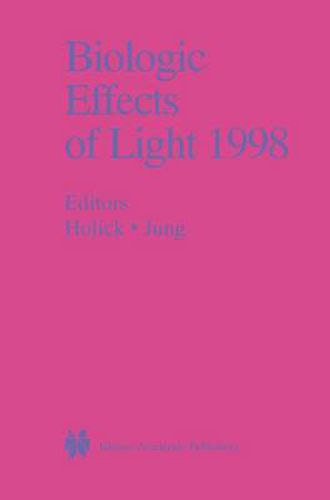Readings Newsletter
Become a Readings Member to make your shopping experience even easier.
Sign in or sign up for free!
You’re not far away from qualifying for FREE standard shipping within Australia
You’ve qualified for FREE standard shipping within Australia
The cart is loading…






This title is printed to order. This book may have been self-published. If so, we cannot guarantee the quality of the content. In the main most books will have gone through the editing process however some may not. We therefore suggest that you be aware of this before ordering this book. If in doubt check either the author or publisher’s details as we are unable to accept any returns unless they are faulty. Please contact us if you have any questions.
It is remarkable how much we take for granted the tremendous energy and vitality that the sun provides earth’s inhabitants. As we enter the new millennium, it is worthwhile to review how our ancestors perceived the biologic effects of sunlight, and how science and medicine have advanced our knowledge about the biologic effects of light.
At the turn of the century, a multitude of investigators explored the use of sunlight and artificial radiation for treating a multitude of diseases. These explorations gave rise to photodynamic therapy, phototherapy, and chemophototherapy. However, enthusiasm for using sunlight and artificial radiation to treat disease was dampened with the birth of pharmacology.
It was the goal of the Fifth International Arnold Rikli Symposium on the Biologic Effects of Light, held in Basel, Switzerland, on November 1-3, 1998, to review the history of phototherapy and have some of the world’s leading experts on the biologic effects of light provide new perspectives on the positive and negative effects of light. The general topics included a broad range of biologic effects of sunlight, artificial ultraviolet radiation and electromagnetic radiation. Special sessions on radiation and vitamin D and bone health, photoimmunology, biopositive effects of UV radiation, effects of electromagnetic currents and fields, and ocular and non-ocular regulation of circadian rhythms and melatonin, should be of particular interest to readers of Biologic Effects of Light.
$9.00 standard shipping within Australia
FREE standard shipping within Australia for orders over $100.00
Express & International shipping calculated at checkout
This title is printed to order. This book may have been self-published. If so, we cannot guarantee the quality of the content. In the main most books will have gone through the editing process however some may not. We therefore suggest that you be aware of this before ordering this book. If in doubt check either the author or publisher’s details as we are unable to accept any returns unless they are faulty. Please contact us if you have any questions.
It is remarkable how much we take for granted the tremendous energy and vitality that the sun provides earth’s inhabitants. As we enter the new millennium, it is worthwhile to review how our ancestors perceived the biologic effects of sunlight, and how science and medicine have advanced our knowledge about the biologic effects of light.
At the turn of the century, a multitude of investigators explored the use of sunlight and artificial radiation for treating a multitude of diseases. These explorations gave rise to photodynamic therapy, phototherapy, and chemophototherapy. However, enthusiasm for using sunlight and artificial radiation to treat disease was dampened with the birth of pharmacology.
It was the goal of the Fifth International Arnold Rikli Symposium on the Biologic Effects of Light, held in Basel, Switzerland, on November 1-3, 1998, to review the history of phototherapy and have some of the world’s leading experts on the biologic effects of light provide new perspectives on the positive and negative effects of light. The general topics included a broad range of biologic effects of sunlight, artificial ultraviolet radiation and electromagnetic radiation. Special sessions on radiation and vitamin D and bone health, photoimmunology, biopositive effects of UV radiation, effects of electromagnetic currents and fields, and ocular and non-ocular regulation of circadian rhythms and melatonin, should be of particular interest to readers of Biologic Effects of Light.